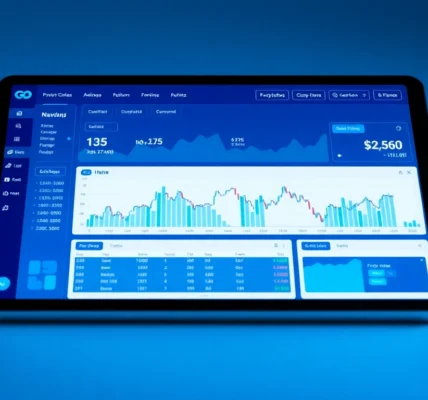Understanding and Leveraging Trading Updates for Market Success
The modern investor’s landscape is shaped by a continuous stream of information, rapidly evolving data points, and real-time market movements. Amid this dynamic environment, Trading Updates have become an essential tool for traders and investors seeking to navigate the complexities of financial markets. These updates offer crucial insights into market sentiment, economic indicators, and geopolitical events, all of which influence price movements and investment decisions. In this comprehensive guide, we delve into the significance of trading updates, how to interpret them effectively, and how to integrate them into your ongoing investment routine to enhance decision-making accuracy.
Introduction to Trading Updates and Their Importance in Market Analysis
What Are Trading Updates and Why Do They Matter?
Trading updates are real-time or periodic reports that reflect the latest developments within financial markets. They include data such as stock price changes, trading volume, economic releases, corporate earnings, geopolitical developments, and central bank statements. Unlike lagging data that provide historical insights, trading updates allow traders to assess the present market environment and make swift, informed decisions.
Given the fast-paced nature of markets—where a single piece of news or data point can trigger significant volatility—staying current with trading updates is vital. Effective use of these updates helps traders anticipate trends, manage risks, and realize opportunities aligned with evolving market conditions.
This is especially crucial during periods of heightened volatility, where market sentiments fluctuate rapidly, and timely information can determine profitable entry or exit points. Recognizing the importance of trading updates in market analysis provides a competitive edge that can significantly impact overall investment performance.
Strategies for Tracking and Interpreting Trading Updates Effectively
Real-Time Monitoring Tools and Platforms
Accessing timely trading updates requires sophisticated tools and platforms designed for real-time data delivery. Major financial news outlets such as CNBC, MarketWatch, Reuters, and Yahoo Finance offer live updates, news feeds, and breaking alerts that are invaluable for active traders.
Additionally, trading platforms like MetaTrader, Thinkorswim, and Interactive Brokers provide customizable dashboards and alerts for relevant market activity. These tools allow traders to set specific triggers based on price levels, volume surges, or news events, ensuring they never miss critical updates during trading hours.
Incorporating APIs from financial data providers such as Bloomberg Terminal or Investing.com enables even more tailored monitoring, integrating live data feeds directly into analysis workflows. The key is to select tools that match your trading style and speed requirements—whether high-frequency trading or longer-term position management.
Key Indicators and Data Points to Focus On
To harness the full potential of trading updates, traders must identify the indicators and data points that most influence market movements. These include:
- Economic indicators such as GDP, inflation rates, unemployment figures, and manufacturing data. These reveal the health of the economy and can signal shifts in monetary policy or interest rates.
- Corporate earnings reports and guidance. Earnings surprises often drive stock price volatility, especially when they deviate significantly from analyst expectations.
- Central bank statements and monetary policy decisions. Announcements regarding interest rate changes or quantitative easing impact currency and bond markets profoundly.
- Geopolitical developments and macroeconomic news. Trade tensions, elections, or sanctions can cause swift market reactions across sectors.
- Market sentiment indicators such as volatility indices (VIX) and investor sentiment surveys. These gauges offer insights into the prevailing mood of traders and investors.
Analyzing Market Trends From Trading Updates
Interpreting trading updates requires contextual analysis. For example, a sudden spike in bond yields following a Federal Reserve statement might indicate expectations of monetary tightening, which could pressure equities. Conversely, positive earnings surprises on major tech stocks could signal strength in that sector.
Advanced techniques involve integrating trading updates with technical analysis, using chart patterns, support/resistance levels, and momentum indicators to confirm market direction. Fundamental analysis should complement this, assessing the implied valuation changes or macroeconomic implications of the updates.
Establishing a framework for trend analysis—such as tracking moving averages, breakout signals, or divergence patterns—can help translate trading updates into actionable insights with higher confidence levels.
Best Practices for Incorporating Trading Updates Into Your Investment Routine
Creating a Trading Update Review Schedule
Consistency is key. Design a routine that aligns with your trading style—daily for active traders or weekly for longer-term investors. Regular review sessions allow you to process incoming information systematically and prevent emotional reactions caused by sporadic or impulsive decision-making.
For day traders, this could mean monitoring pre-market news, economic releases during the trading day, and after-hours updates. Swing traders and investors may focus on weekly or monthly summaries and key earnings reports. Incorporation of calendar alerts for scheduled economic events ensures timely preparation.
Integrating Trading Updates With Technical and Fundamental Analysis
Combining data sources enhances decision accuracy. For instance, a positive earnings report (fundamental) reinforced by a bullish chart pattern (technical) strengthens the conviction to buy. Conversely, conflicting signals may warrant caution or a wait-and-see approach.
Building an automated or semi-automated dashboard that flags relevant updates in conjunction with technical indicators simplifies this integration. Maintaining a trading journal that records how updates influenced your trades is invaluable for refining your approach over time.
Managing Risks and Expectations Based on Market News
Not all updates lead to sustained market moves; some cause brief spikes or dips. Setting stop-loss and take-profit orders based on recent updates can protect gains and limit losses. It’s critical to avoid overreacting to short-term noise by considering the broader context and corroborating with other data points.
Educating yourself on market psychology and the typical impact of certain news releases helps in managing expectations, reducing emotional trading, and maintaining discipline during volatile periods.
Future Trends in Trading Updates and Market Reporting
Emerging Technologies in Market Data Delivery
Advancements in financial technology are revolutionizing how trading updates are delivered and consumed. Cloud computing, 5G connectivity, and IoT devices enable ultra-fast dissemination of news, making split-second decision-making more accessible.
Real-time data streaming services and AI-powered analysis tools are increasingly integrated into trading platforms, providing investors with predictive insights and automated alerts based on complex algorithms.
Artificial Intelligence and Automated Trading Based on Trading Updates
AI-driven trading systems now incorporate natural language processing (NLP) to analyze news headlines and sentiment, executing trades without human intervention. These systems can scan multiple data sources simultaneously, identify patterns, and respond more swiftly than manual traders.
Automation reduces emotional bias and facilitates sophisticated strategies that adapt dynamically to new information, thereby elevating trading efficiency and accuracy.
Predicted Changes in Market News Accessibility and Transparency
As regulatory frameworks evolve and technology spreads, market transparency is expected to improve. Increased access to reliable, real-time updates and standardized reporting will empower traders at all levels.
Furthermore, blockchain innovations could enhance the authenticity and traceability of market news, reducing misinformation and enhancing trust in data sources.




